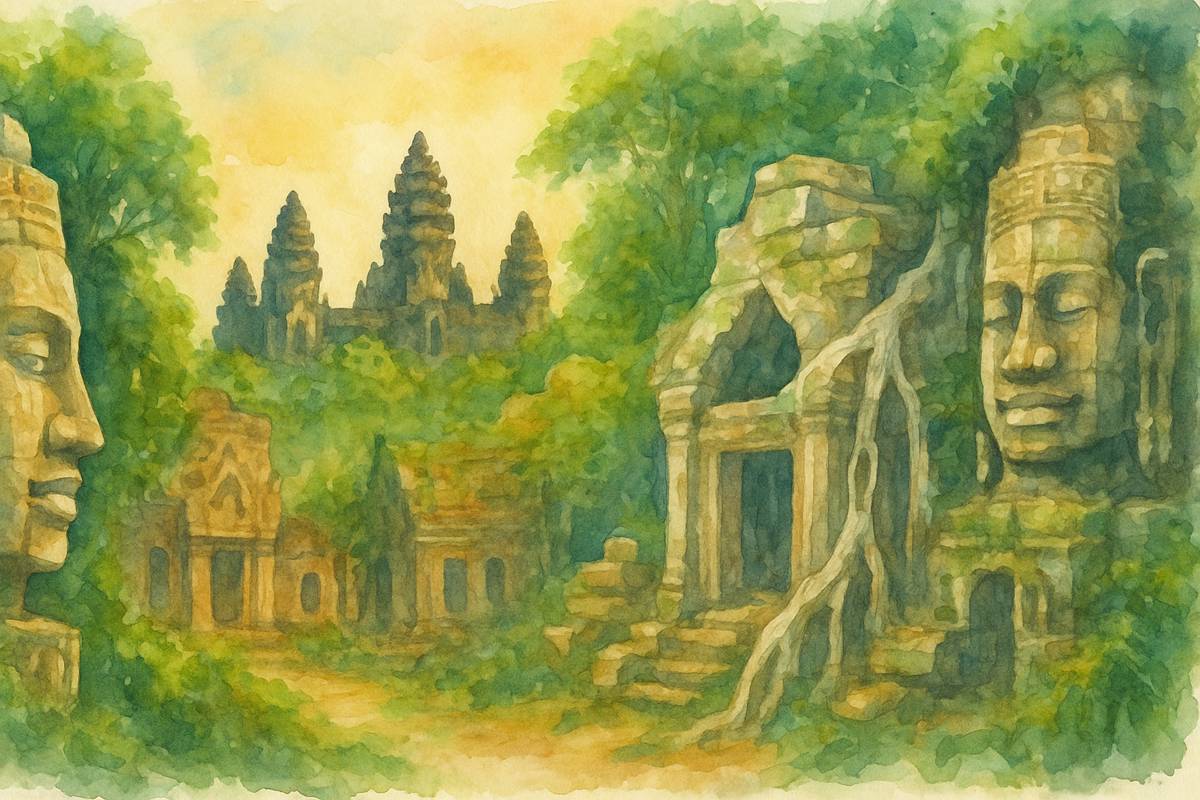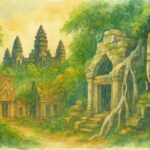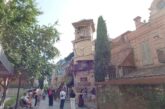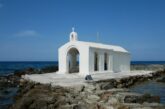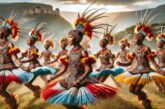Cambodia’s Timeless Temples
In the soft glow of dawn, the silhouette of Angkor Wat’s towers emerges against a fiery sky, and a hush falls over the gathered travellers. You can’t help but be captivated by the grandeur of a lost empire and the gentle smiles of today’s monks.
Cambodia’s historical highlights are not merely tourist sites; they are living chronicles of a civilization that flourished, faltered, and finds renewal in the curious eyes of visitors. From the world-renowned temples of Angkor to hidden jungle sanctuaries seldom seen by Western eyes, each site tells a story etched in sandstone and draped in roots.
In this journey, we explore the famous and the forgotten – Angkor Wat, Bayon, Ta Prohm, Banteay Chhmar, Koh Ker, Phnom Kulen. Along the way, practical tips will prepare you for an unforgettable adventure into the heart of Cambodia’s cultural heritage.
Let’s step into the time machine of travel, where every carving and every dawn reveals a piece of history and a glimmer of hope for the future.
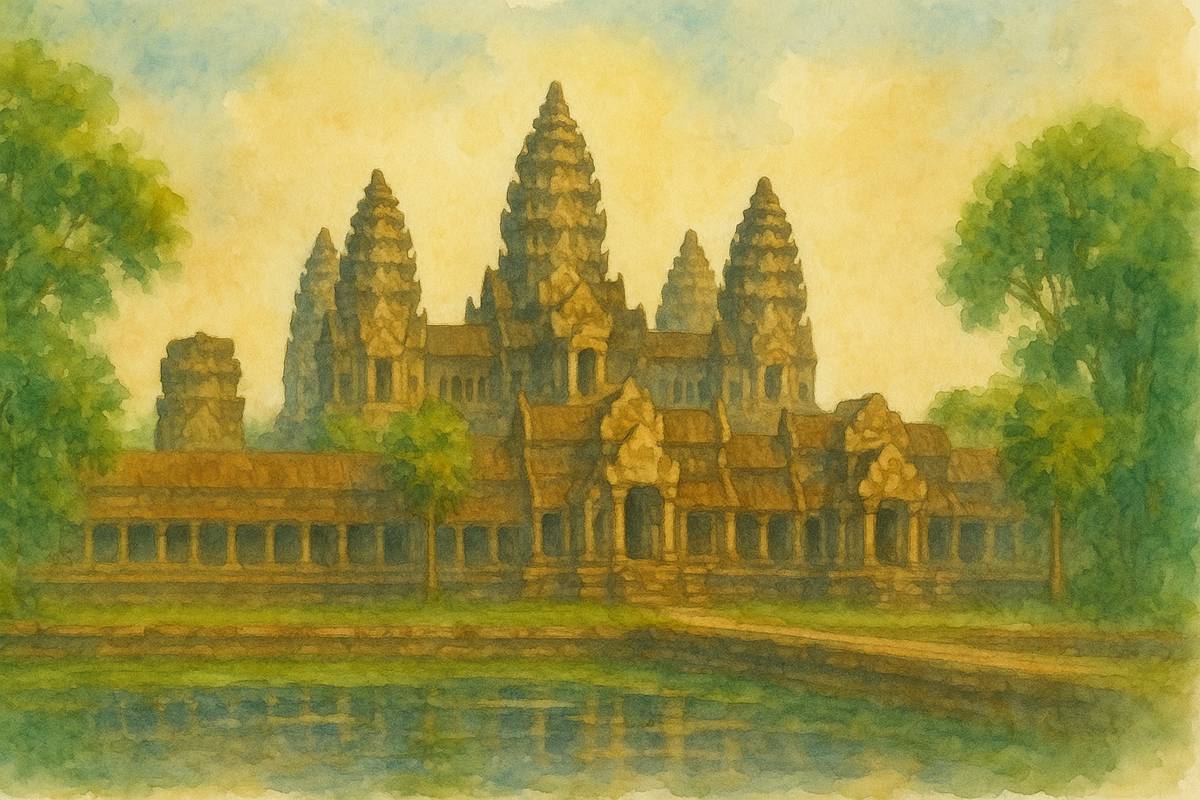
Angkor Wat – Crown Jewel of the Khmer Empire
Angkor Wat at sunrise, its lotus-like towers illuminated by the first rays. The first light of day at Angkor Wat is a moment of almost spiritual beauty – the sun’s orb balances atop the central tower, bathing the 12th-century temple in golden hues.
Built by King Suryavarman II around the year 1150, Angkor Wat was intended as a cosmic mountain dedicated to the Hindu god Vishnu. It remains the world’s largest religious structure, spread over some 400 acres of carved stone corridors, courtyards, and moats. Walking across its vast causeway, you can feel the weight of history: this “temple-mountain” represents the high point of Khmer architecture and ambition, so iconic that its profile graces Cambodia’s flag.
Every surface is adorned with bas-reliefs – celestial dancers (apsaras) float along the walls, and epic scenes like the Churning of the Ocean of Milk unfold in intricate detail. As you run your fingers gently across sandstone carvings worn smooth by centuries, you can imagine the artisans and the thousands of workers who toiled to create this monument of faith and power.
Yet despite Angkor Wat’s fame, its enormity allows for moments of solitude. In the predawn darkness, the reflection of the temple shimmers in lotus ponds in front of the western façade. By mid-morning, sunlight reveals the temple’s symmetry: five towers forming a quincunx, symbolizing the peaks of Mount Meru (the cosmic centre in Hindu and Buddhist cosmology).
Historical context: Angkor Wat was originally Hindu but gradually became a Buddhist shrine, mirroring Cambodia’s religious evolution. Uniquely, it faces west (symbolically linked with Vishnu and the setting sun) and was never fully abandoned even during periods of decline.
The surrounding city of Angkor was once the thriving capital from which Khmer kings ruled a realm stretching across Southeast Asia. Standing here, it’s easy to sense why French explorer Henri Mouhot, upon “rediscovering” Angkor in 1860, likened it to finding a monument as grand as Solomon’s Temple in the jungles of Asia.
Traveller’s tips: Angkor Wat is the centrepiece of the larger Angkor Archaeological Park near Siem Reap. A one-day pass costs about $37 USD, but most visitors opt for a 3-day pass at $62 USD to fully explore Angkor’s many temples.
The best time to visit is during the dry season November to February when days are cooler and the skies clear – perfect for sunrise and sunset photography. Try to arrive before dawn for the iconic sunrise view (around 5:00 AM). Later in the day, midday heat can be intense, so bring water, a hat, and sunscreen.
Many travellers hire a local tuk-tuk driver to shuttle between temples; tuk-tuks are inexpensive three-wheeled taxis (negotiate ~$20–$25 for a day around Angkor).
Dress respectfully when entering Angkor Wat’s inner towers – knees and shoulders must be covered (this is enforced). And if you can, engage a local guide (around $20–$30 per day) to help uncover Angkor’s history hidden in those bas-reliefs.
As the sun sets and the daytime crowds recede, Angkor Wat’s grandeur takes on a tranquil, almost ethereal quality – a gentle reminder that even empires leave behind whispers of grace.
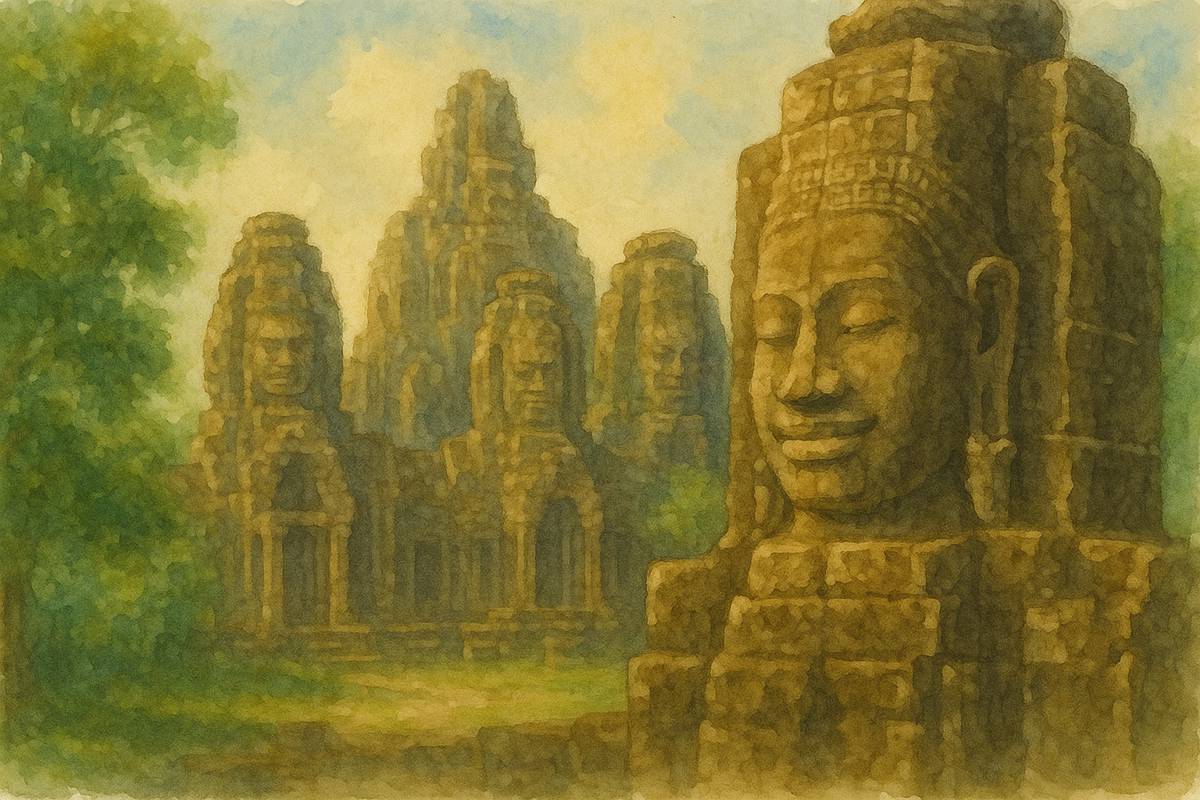
Bayon – The Enigmatic Faces of Jayavarman VII
The serene stone faces of Bayon peer out from its crumbling towers. Deep in the fortified city of Angkor Thom lies Bayon, a temple that mesmerizes with its multitude of smiling faces carved in stone.
Arrive at Bayon just as the morning light slices through the canopy, and suddenly you are face-to-face with a 13-foot tall serene visage gazing down from a temple tower. Then another face, and another – in every direction, these enigmatic gentle smiles, eyes closed in eternal contemplation.
Bayon, built in the late 12th century, was the state temple of the Buddhist King Jayavarman VII, and its most distinctive feature is the array of about 200 colossal faces gracing 50+ towers. Scholars believe the faces likely depict Avalokiteshvara, the Bodhisattva of Compassion, but bearing the likeness of the king himself. This fusion of the divine and the royal was Jayavarman’s way of placing himself as a god-king at the centre of his kingdom – literally, since Bayon stands at the exact middle of Angkor Thom.
Wandering through Bayon feels like navigating a stone puzzle. The layout is a bit haphazard – narrow corridors lead to collapsed galleries, steep staircases climb to vantage points where you suddenly find yourself eye-to-eye with a giant face. The temple’s design has been described as the “most striking expression of the baroque style” of Khmer architecture, in contrast to the classical symmetry of Angkor Wat.
In Bayon’s bas-reliefs, you will find lively depictions of the 12th-century Khmer life: market scenes, fishing in the Tonlé Sap lake, even a carved image of a Chinese merchant and a chess game. These carvings bring humanity to the temple, balancing the otherworldly presence of those towers above.
Standing on the upper terrace, surrounded by silent stone faces catching the sunlight, it is easy to feel an uncanny kinship – as if the watchful guardians of Bayon are observing the present as much as we observe the past.
Traveller’s tips: Bayon sits at the center of Angkor Thom, the great walled city. It’s part of the Angkor Park, so your Angkor pass covers it. Many visitors come to Bayon right after Angkor Wat’s sunrise, so by 8–9 AM it can be busy.
For a quieter experience, consider visiting Bayon at lunchtime or late afternoon when tour groups thin out (many take lunch then). Another trick is to do the reverse: see Bayon at sunrise – the temple opens around 7:30 AM and the soft morning light is excellent, plus you might share the smiles with fewer people while everyone else is at Angkor Wat’s sunrise.
Bring a good pair of walking shoes, as Bayon’s stones are uneven and worn. Climbing up to the third level involves steep, narrow steps, so use caution. Once up top, spend time finding different angles; there’s a classic spot on the eastern side where multiple face-towers align for that perfect photo (a guide or guidebook can point it out).
Fun fact: If you feel like the faces are watching you wherever you go, you’re not imagining it – Bayon’s towers are arranged so that at least one face is always visible from any point in the temple. It’s a humbling design, meant to signify the ever-present compassion of the bodhisattva-king. As you leave Bayon through the ancient Victory Gate of Angkor Thom, glance back and catch one more quiet smile carved in stone – a farewell from the past.
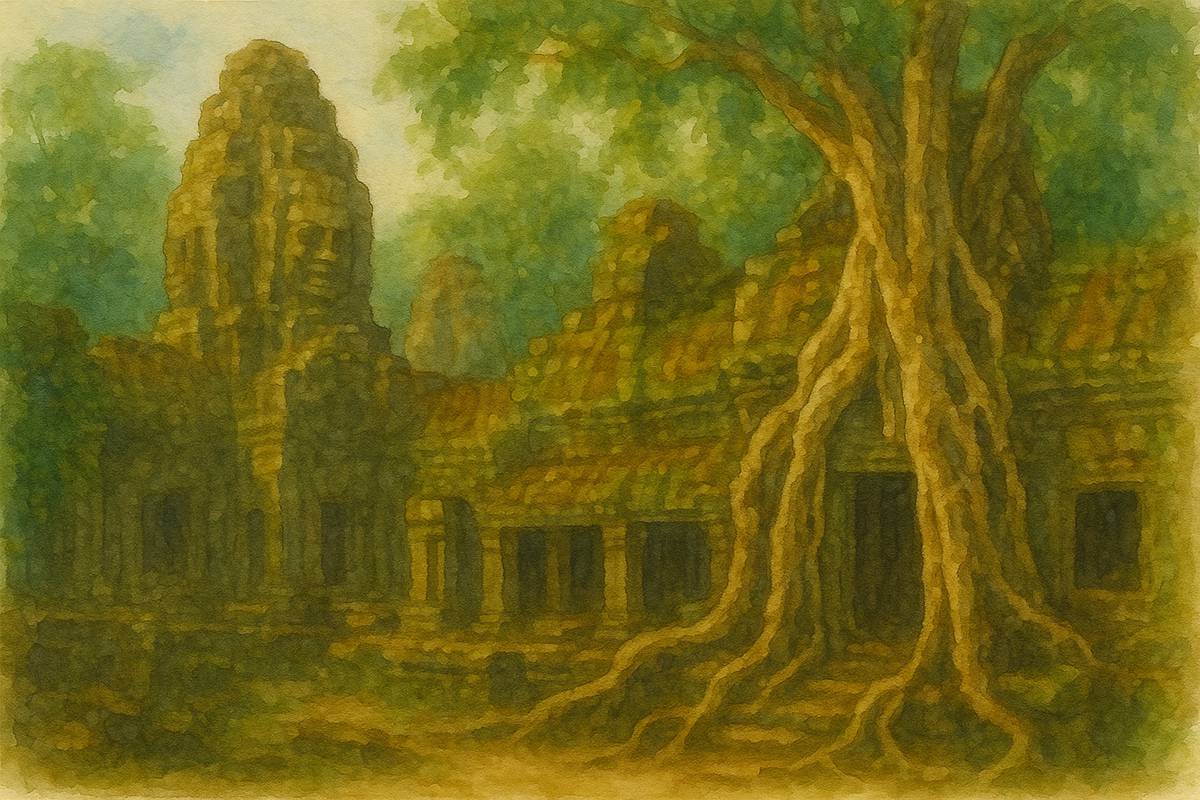
Ta Prohm – Where Jungle and Temple Embrace
Strangler fig roots engulf a doorway at Ta Prohm, creating a jungle sanctuary. In Ta Prohm, nature is not just a backdrop – it’s a co-architect of the scene.
As you step into the temple grounds, you are immediately greeted by the sight of massive tree roots cascading over crumbling walls, like the frozen tentacles of some benevolent giant. Ta Prohm is often called the “Tomb Raider temple” for its appearance in the Angelina Jolie film, but no Hollywood set could top the reality: kapok and fig trees weave in and out of sandstone pavilions, their roots prying apart ancient stones while also holding them together in a delicate balance.
Founded in 1186 by Jayavarman VII, Ta Prohm was originally named Rajavihara (Royal Monastery) and dedicated to the king’s mother. This was not a small shrine – it was an entire monastic complex of halls, libraries, and courtyards, supported by 80,000 people including priests, monks, scribes, and villagers in surrounding lands. Ta Prohm was as much a city as a temple – a centre of learning and religion in its time.
What makes Ta Prohm special today is the decision to leave it largely as it was found in the 19th century, with the jungle entwined. Conservation efforts here focus on “fixing while keeping the wild look” – ensuring structures don’t collapse, but not removing the iconic trees that have become one with the architecture. The result is a romantic ruin that fires the imagination.
In one courtyard, you will find a giant tree root arching over a roof like the back of a sleeping elephant. In another corner, delicate carvings of devatas (sacred women) peek out from under moss and lichen, framed by twisting roots. Sunlight filters through the foliage, illuminating motes of dust in the air, and the effect is positively dreamlike.
Pause in a quiet hall where a lone stone pillar stands wrapped in silk prayer scarves – evidence that locals still come to pray here, leaving offerings of jasmine and lotus. It’s easy to feel the sacred energy of Ta Prohm, where the boundary between human devotion and nature’s embrace blurs.
Traveller’s tips: Ta Prohm is on the “Small Circuit” of Angkor temples and is extremely popular, so timing is everything. Aim for early morning (just after 7 AM) or late afternoon (after 3 PM) to avoid the busiest crush. From 9 AM to 2 PM, large tour groups can make the narrow walkways congested.
If you have a 3-day Angkor pass, you might even visit twice – once for photos when lighting is good, and another time just to soak in the atmosphere when fewer people are around.
Dress and footwear: Wear sturdy shoes, as you’ll be clambering over roots and broken stones. A flashlight can be handy to peer into dim corridors that hide beautiful carvings.
Photography tip: The famous “Tomb Raider tree” (a giant silk-cotton tree overgrowing a doorway, as seen in many photos) is on the eastern side of the complex – go early to catch it in soft light and without people waiting in line to snap selfies. Remember that these trees are ancient and the structures fragile; do not climb on loose ruins or roots.
Ta Prohm is a place to channel your inner adventurer, but gently. Lastly, listen for the sounds: the chirping of cicadas, the distant coo of pigeons that roost in the crevices, and at times the laughter of children from a nearby village. They all add to the sense that Ta Prohm is a living poem – a story of impermanence and resilience writ in roots and stone.
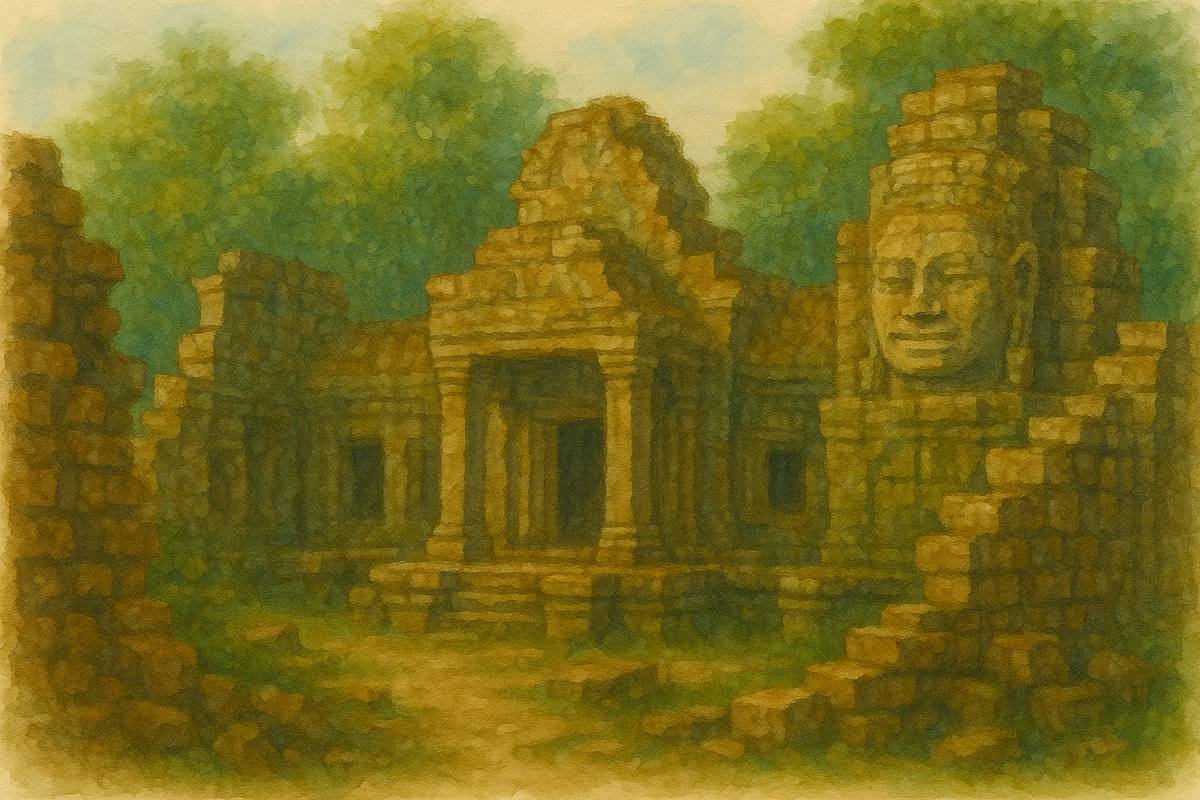
Banteay Chhmar – The Forgotten Citadel of the Plain
In a remote corner of northwest Cambodia, near the Thai border, lies Banteay Chhmar, a temple complex that few travellers venture to – and that’s exactly its appeal. The journey here is an adventure of its own: a 3-4 hour drive from Siem Reap through rice paddies and villages where children wave hello, or an overland detour if you’re coming from Thailand.
When you first glimpse Banteay Chhmar, it’s as if you’ve stumbled on a secret Angkor lost in time. Towering strangler figs and thorny vines guard the ruins. Massive walls encircle a compound littered with lichen-covered stones and partially collapsed galleries. And then youI see them – faces in the stone, smiling ever so faintly.
Much like Bayon, Banteay Chhmar features the enigmatic face-towers of Jayavarman VII; in fact, it was built by that same prolific king in the late 12th century. This temple was one of his grand projects to honour his son (or possibly a military commander), and it is one of the largest temple complexes in Cambodia – sometimes called the “second Angkor Wat” for its scale. Here, however, the jungle has been less kind and human neglect more prolonged, so the complex lies largely in ruin, with just enough restored path to allow exploration.
Walking through Banteay Chhmar, you will feel like an archaeologist in an Indiana Jones film. There are no crowds – only the sound of the wind in the trees and the occasional chatter of a bird or monkey.
The main temple’s layout is vast: you pass under a gopura (gate) into what would have been a courtyard, now open to the sky. Piles of carved blocks lie where they fell, some still showing exquisite patterns of lotus flowers and devatas. In the central sanctuary, one of the Bayon-style towers still stands, bearing four faces that gaze serenely toward the cardinal points. Sunlight and shadow play upon the contours of those weathered visages, giving them an almost lifelike quality.
Along the eastern gallery wall, you come across a breath-taking sight: a bas-relief of a 32-armed Avalokiteshvara (a form of the Bodhisattva of Compassion) stretching larger-than-life across the stone. Despite centuries of wear and a history of looting, this sculpture retains its elegance – each arm radiating outwards, some hands holding lotus flowers, others forming mudras. It’s a motif not seen at Angkor’s main temples, making it all the more special.
Other panels nearby depict fierce battle scenes and procession of warriors, likely celebrating Jayavarman VII’s victories over Champa. These carvings, experts say, rank among the finest of Angkorian art
Banteay Chhmar’s isolation has been a double-edged sword. On one hand, it protected the site from mass tourism, allowing for an authentic “jungle temple” experience. On the other, it left it vulnerable to looting during the turbulent 20th century. In fact, in 1998, organised looters tragically hacked off and stole several of the beautiful face carvings and relief panels – one of the most infamous antiquities thefts in Cambodia’s history. This theft drew international attention and fortunately led to greater efforts to protect and conserve Banteay Chhmar.
Today, restoration is slowly underway but much of it remains unrestored, which means as a visitor you truly feel the raw magic of discovery. As archaeologist David Brotherson noted, the temple’s unrestored state gives you a “full-on ‘Tomb Raider’ jungle-temple experience.” Carefully scramble over a fallen doorway, duck under a low-hanging branch, and find yourself alone in a quiet corner of the temple where tree roots choke a dilapidated hall. Shafts of sunlight break through the foliage onto a pedestal that likely once held a statue of Buddha. In this quiet moment, with butterflies fluttering through sunbeams and not another soul in sight, Banteay Chhmar feels truly lost in time.
Traveller’s tips: Visiting Banteay Chhmar requires some planning but is immensely rewarding for the adventurous spirit. The site is about 63 km north of Sisophon (Banteay Meanchey’s provincial town) – roughly a 3-hour drive from Siem Reap on mixed paved and dirt roads. It’s best reached by hiring a car with a driver (expect around $100–$120 for a day trip due to distance) or arranging a tour.
There are community-based tourism (CBT) options here that are a highlight in themselves. The Banteay Chhmar CBT offers homestays in a nearby village, guided temple tours, and even cooked meals by local families. Staying overnight in a homestay (basic but comfortable) allows you to experience the temple at sunset and sunrise, virtually alone – a privilege Angkor can rarely afford.
If a homestay isn’t your style, you can also visit on a long day trip from Siem Reap, but start early (by 6 AM). Bring food, water, and snacks – there are limited services (though the CBT centre has a visitor area where local women can cook a simple lunch).
Dress in long pants and sleeves despite the heat, because mosquitoes in the jungle can be plentiful, and you’ll want protection while walking through brush.
A local guide is strongly recommended: not only for safety and navigation (the complex has many hidden corners, and the surrounding forest can be disorienting), but also to share the rich history and legends of Banteay Chhmar.
Guides from the CBT are very knowledgeable and your fees support the local community. Lastly, respect the site’s wild state – watch your footing on unstable stones, do not remove any artifacts (even picking up an old stone as a “souvenir” is illegal and unethical), and be mindful that you’re one of very few visitors in a sacred space.
Banteay Chhmar may be off the beaten path, but for those who make the trek, it offers a profound connection with Cambodia’s past – a place where you can be an intrepid explorer, not just a tourist.
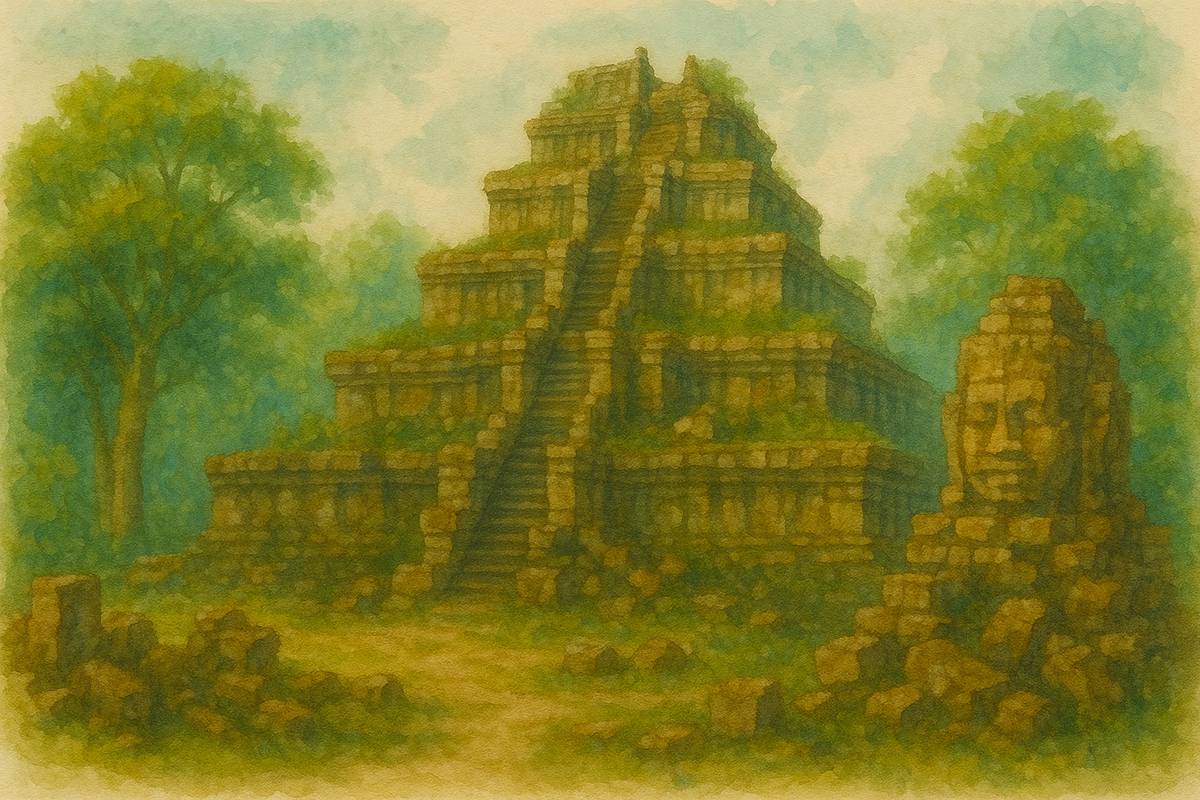
Koh Ker – A Pyramid in the Cambodian Jungle
The seven-tiered Prasat Prang at Koh Ker, rising above the surrounding forest. East of Angkor, in a remote forest clearing far from any town, an ancient pyramid rises from the earth. The site is Koh Ker, and the striking pyramid-temple called Prasat Prang dominates the landscape – a seven-tiered sandstone mountain 115 feet high.
Standing before it, you will feel a jolt of awe: it’s like encountering a Mayan temple in the middle of Cambodia. Koh Ker was a radically different kind of Angkorian capital.
For a brief period in the 10th century (928–944 AD), King Jayavarman IV moved the Khmer capital here, turning this wilderness into the centre of his kingdom. Why he relocated so far from Angkor remains something of a mystery, but one practical reason is evident – nearby quarries. The buildings of Koh Ker are hewn from enormous blocks of laterite and sandstone, dragged from quarries in the surrounding hills. The result is a site of superlatives: Prang, the great pyramid, is Cambodia’s tallest pre-modern structure, and many of the carvings and statues found here are larger than those at Angkor.
In its heyday, Koh Ker was a city of temples – over 180 sanctuaries have been found across some 30 square kilometres of jungle. Today, much of it remains swallowed by forest, with only around two dozen structures regularly visited.
Climbing the pyramid (which thankfully now has a wooden staircase for safety) offers a panorama of green treetops and distant hills. At the summit, where a Shiva linga once stood symbolizing the god-king’s power, a perfect spot to take in the solitude. Only the buzz of cicadas and the rustle of leaves.
It’s a very different mood from Angkor’s bustling courtyards – here, you are alone with the ghosts of the past. On descending, set out to explore some of Koh Ker’s other highlights: Prasat Krahom, the “Red Temple,” named for the reddish hue of its bricks, which has impressive stone guardians and carvings of garudas (mythical bird-men) still clinging to its walls.
Then there’s Prasat Bram, a cluster of five small brick towers being devoured by tree roots – nature’s reminder that even kings are eventually humbled by time. As you wander, recall what archaeologists have noted: Koh Ker’s artworks, especially its linga (phallic symbols of Shiva), are abundant and massive – more than 20 temples here were devoted to Shiva and housed sacred lingas.
Some of the finest Khmer sculptures, now in museums around the world, came from Koh Ker’s remote sanctuaries (sadly many were looted in the past, but efforts are underway to recover and return them). Despite its one-time glory, Koh Ker was abandoned and largely forgotten after the capital moved back to Angkor. That forgotten aspect lends a real sense of discovery to visitors today.
Traveller’s tips: Koh Ker is about 120 km northeast of Siem Reap – roughly a 2.5-hour drive one-way. Most travellers visit it as a day trip combined with Beng Mealea (a jungle temple roughly on the route back). You can hire a car/tuk-tuk from Siem Reap (expect around $70–$100 for a car for the day, since it’s a long haul).
There is now a paved road most of the way, making the journey smoother than it used to be when it was dirt and landmine-ridden. Yes, landmines: Stay on marked paths at Koh Ker, as some areas off the main tracks might still harbour unexploded ordnance from decades of war – another reason to have a local guide who knows safe routes.
Koh Ker recently gained prestige as Cambodia’s newest UNESCO World Heritage Site (inscribed 2023), which is shining a light on this gem and hopefully improving visitor facilities.
Currently, you’ll need a separate ticket for Koh Ker (around $10 at the entrance). There are basic rest stops and vendors near the parking area selling cold drinks and instant noodles, but it’s wise to bring snacks and water.
When to visit: Start early from Siem Reap to arrive at Koh Ker by mid-morning when it’s not too hot to climb the pyramid. The site is usually quiet (only a trickle of visitors each day), so you can explore at leisure. Don’t miss Prasat Bram with its tree-smothered towers – it’s one of the most photogenic spots.
If you’re a real Angkor enthusiast, consider spending a night in the town of Srayong near Koh Ker, where simple guesthouses exist – this allows more time to see the lesser-known temples in the Koh Ker group and perhaps catch sunset from the pyramid (though note the site officially closes around 5 PM).
Respect and safety: As always, do not touch or climb on delicate carvings. Bees sometimes nest in the temple crevices, so be mindful of that. Koh Ker’s rugged beauty and isolation make it a truly special destination – you will leave with a profound sense of having stepped briefly into a lost world, one where a king’s grand vision rose and fell, now quietly reclaimed by the forest.
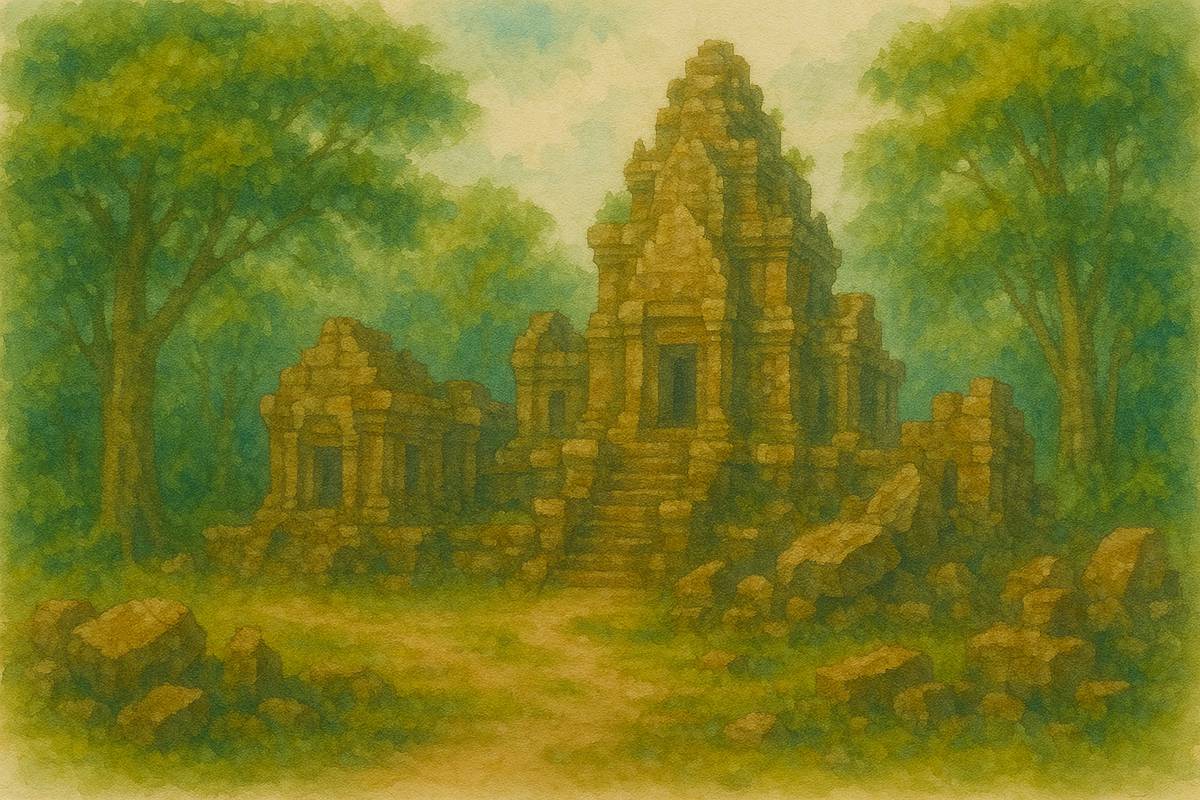
Phnom Kulen – In the Footsteps of Kings on Cambodia’s Sacred Mountain
A cascade on Phnom Kulen – sacred waters flowing through the jungle. The journey shifts from temples to nature as we head to Phnom Kulen, a plateau of lush rainforest and waterfalls often dubbed the “birthplace of the Khmer Empire.”
It was atop Kulen (then called Mahendraparvata) in 802 AD that a sacrificial ceremony established King Jayavarman II as the devaraja (god-king) and declared independence from Java, marking the dawn of the Angkorian era. Knowing this, climbing Phnom Kulen feels like a pilgrimage.
The road up the mountain is steep and winding, flanked by dense greenery. As you crest the top, a sense of serenity envelop you – the air is cooler, scented with wildflowers and earth after a recent rain. Locals consider Kulen holy.
The first stop is the famous River of a Thousand Lingas (Kbal Spean) – a clear jungle stream whose bedrock is carved with dozens of lingas and Yoni symbols and even a reclining Vishnu, all under the flowing water. The ancient Khmers sculpted these to sanctify the water as it flowed down to the Angkor plain; run your hand through the gentle stream and over the carvings, feeling the cold, sacred water. It’s an oddly intimate connection to those artisans of 1200 years ago.
Further up, follow sounds of laughter and rushing water to Kulen’s famed waterfalls. There are two tiers: the upper fall is small (around 5 meters) – a wide curtain of water pouring into a rocky pool, perfect for a cooling dip. The second tier, reached by a short jungle path, is much taller – about 20 meters of water free-falling into a large basin. It’s a spectacular sight, straight out of a postcard.
On weekends, you’ll find Cambodian families here in droves, picnicking on bamboo platforms, kids splashing gleefully in the shallows. Visit on a weekday and nearly to have it to yourself – a private Eden where you can stand under the pounding falls letting the water drench you (a welcome natural shower after days of temple dust!).
The waterfall is more than just scenery; many locals believe its water has healing and holy properties, so don’t be surprised to see people filling bottles to take home. After drying off and enjoying a simple lunch from a local stall (grilled chicken and papaya salad, eaten with fingers while sitting on a mat – bliss), make your way to Preah Ang Thom, the reclining Buddha.
This 16th-century Buddhist monastery sits atop the highest point of Kulen. Climb a stone staircase flanked by lions and naga-serpents, and at the summit enter a shrine built around a giant reclining Buddha carved from the living rock of the mountain – 8 meters long. The statue’s peaceful face gazes skyward, and devotees kneel at its base, lighting incense and pressing gold leaf to the Buddha’s forehead.
Join the line to offer a prayer; despite not being Buddhist, the atmosphere is so reverent and welcoming that it feels natural to partake. A monk ties a red thread bracelet on your wrist for luck, and you are genuinely blessed.
From this vantage point, you can look out over the jungle canopy – endless green as far as the eye can see, with the misty outline of distant plains where Angkor lies. Jayavarman II himself likely stood somewhere on this mountaintop when he proclaimed his kingdom, surveying the same panorama.
Traveller’s tips: Phnom Kulen is about 50 km north of Siem Reap, typically 1.5 to 2 hours by car or motorbike. It’s best done as a day trip. Note that there is a separate entry ticket (about $20) for Phnom Kulen National Park (not covered by the Angkor Pass).
If hiring a taxi/tour from Siem Reap (cost ~$60–$80), they’ll arrange the ticket; if riding a motorbike yourself, you can buy the ticket at the base of the mountain or through agencies in town. The road up is one-way: morning traffic goes up (7 AM–11 AM) and afternoon comes down (after 1 PM), so plan accordingly (there’s a midday window when you technically can’t drive down).
Best time to visit: year-round it’s cooler on Kulen than the lowlands. In the rainy season (May–Oct), the waterfalls are at their most impressive, but trails can be slippery; in dry season, the water flow is less, but swimming is still enjoyable and the road is easier. If you can, avoid weekends and Cambodian public holidays, when the mountain sees heavy local pilgrimage traffic.
Wear good walking shoes for the short treks to waterfalls and Kbal Spean carvings – the paths are relatively easy but can be muddy. Bringing a swimsuit (and quick-dry towel) is a good idea so you can fully enjoy the waterfall.
Cultural note: Since Kulen is sacred, dress modestly (keep that sarong or t-shirt handy to cover up after swimming). At Preah Ang Thom temple, remove your shoes to approach the Buddha and observe the faithful – it’s a moving cultural exchange.
Also, be prepared for friendly curiosity; as a foreigner you will be gently approached by Cambodian families who offer food to try and want to take photos together – a lovely chance to engage.
Safety: stick to known paths on the mountain. Unfortunately, here to landmines from past conflicts are an issue in Kulen area; most main spots are cleared and safe now, but wandering off-track in remote areas is not advised.
With a bit of caution and respect, Phnom Kulen will likely be a highlight of your Cambodian journey – a place of natural beauty intertwined with profound history. Leave the mountain with a small bottle of “holy water” and a big imprint on your heart, feeling like you had touched the spiritual source of Khmer civilization.
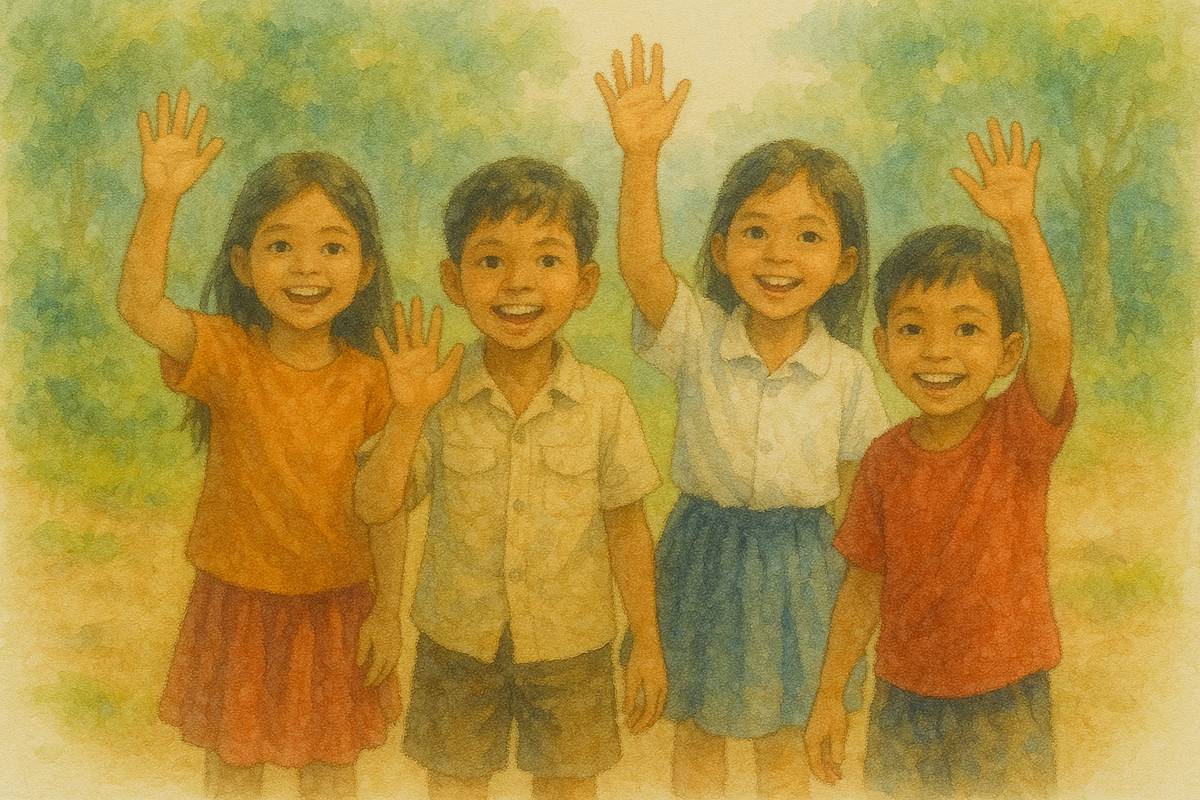
Practical Tips for a Meaningful Cambodian Journey
Visas and Entry
Cambodia offers visa on arrival for most nationalities (including U.S., Canada, UK, EU, Australia, etc.) at airports and land borders. You’ll need a passport valid for 6+ months, a passport photo, and $30 USD cash for the 30-day tourist visa.
To save time, you can also apply for an e-visa online (about $36, single entry) a couple weeks before your trip. Extensions of 30 days are possible in-country through travel agents or at immigration offices. Always keep some US $1 and $5 bills handy for visa fees and border crossings (and avoid overstaying – the fine is $10 per day).
Best Time to Visit
The cool dry season (November–February) is ideal, with pleasant temperatures (~25–30°C) and minimal rain. This is peak tourist season, so expect more crowds at major sites and book accommodations in advance.
March–May brings intense heat – the stone temples can feel like ovens at noon, so schedule outdoor activities for early morning or late afternoon if visiting in this hot season.
June–October is the monsoon (rainy) season: you’ll encounter heavy showers (usually short afternoon downpours), but the landscape is brilliantly green and crowds are thinner.
Angkor in the rain has its own moody charm, and waterfalls like Kulen are in full flow. Just pack a poncho and quick-dry clothes. Whenever you go, carry water and stay hydrated; Cambodia’s humidity can sneak up on you.
Getting Around
Internal travel is fairly easy and affordable. Cambodia’s cities (Phnom Penh, Siem Reap, Battambang, Sihanoukville) are connected by bus services ranging from local buses to comfortable air-conditioned coaches. For example, Phnom Penh to Siem Reap by bus takes ~6 hours and costs $10–$15.
There are also domestic flights (e.g., Phnom Penh–Siem Reap in 45 minutes, $50–$100 one-way) if you’re short on time.
Within cities and tourist areas, tuk-tuks are the way to go – these three-wheeled motor rickshaws are ubiquitous and cheap. Always negotiate the fare before the ride (a short hop in town might be $2, a full day around Angkor ~$20-$25).
In Phnom Penh and Siem Reap, ride-hailing apps (like Grab or local ones like PassApp) can summon metered tuk-tuks and cars, avoiding haggling.
Taxis/private cars are typically hired through hotels or travel agencies; they don’t use meters, so agree on the price first.
For the more adventurous, motorbike and bicycle rentals are available in Siem Reap and Phnom Penh. A bicycle can be a lovely way to explore the Angkor park at your own pace. If renting a scooter or motorbike, international driving permits are technically required and helmets are a must.
Traffic in Cambodia can be chaotic, so consider your confidence level before driving yourself.
In smaller towns, sometimes the only transport is a motodop (motorbike taxi) – fun and breezy, just hold on tight and wear a helmet. Overall, distances to the sites covered in this article: Angkor, Koh Ker, Kulen are all reachable from Siem Reap (the main tourist hub with an international airport), while Banteay Chhmar is halfway between Siem Reap and the Thai border.
Cultural Etiquette
Cambodians are warm, friendly, and quick with a smile. A polite greeting goes a long way. The traditional greeting is the sampeah: press your palms together at chest level and bow slightly – but locals won’t expect foreigners to do it perfectly.
A simple “Hello” or “Susadei” (informal hello) with a smile is fine. Learn a couple of phrases like “Arkun” (thank you) – it always delights locals when you speak Khmer.
When visiting temples or any religious site, dress modestly: cover shoulders and knees at minimum. This is mandatory at Angkor main temples and all active pagodas. Wear clothing that’s lightweight but not too revealing – think loose pants or a long skirt, and a t-shirt (carry a scarf or sarong to wrap over shorts or tank tops if needed).
Remove hats and shoes when entering pagoda buildings or sacred areas. If sitting in front of monks or Buddha statues, avoid pointing your feet directly at them (tuck your legs to the side) – feet are considered the lowest/dirtiest part of the body.
Women should not touch monks (and vice versa); if a woman needs to hand something to a monk, she should pass it via a male intermediary or place it down within the monk’s reach.
Displays of affection (like making out) in temples or public places are frowned upon – save it for private moments.
Photography etiquette
It’s fine to photograph monks from a respectful distance, but always ask permission before taking close-ups, especially of elderly folks or children.
In some temples, you might encounter locals who show you around or allow you to take a photo of them in traditional attire – it’s courteous to give a small tip (a dollar or two) for their time.
Above all, be respectful of the profound spirituality of these places. You’ll notice even rambunctious tourists speak in hushed tones in front of a giant Buddha or under Bayon’s gaze. A bit of cultural sensitivity ensures you’ll be met with open arms wherever you go.
Money and Basics
The Cambodian Riel (KHR) is the official currency, but US dollars are widely used and often preferred for anything above a few dollars. Prices in hotels, restaurants, and shops are usually quoted in USD. You’ll receive small change in riel (at roughly 4,000 riel = $1).
Make sure your US bills are clean and not torn – vendors might refuse damaged notes. ATMs in cities dispense USD. Carry mixed denominations; many local transactions happen in the $1-$5 range, and small vendors may not have change for big bills.
Credit cards are accepted at upscale establishments, but cash is king in rural areas and markets. Bargaining is normal in markets and with drivers, done in good humor.
For food, Cambodian cuisine is delicious and not too spicy – think fresh spring rolls, Khmer curry, and the famous fish amok (curried fish steamed in banana leaf). Western food is available in tourist centers. Do try the street food (grilled meats, noodle soups) but exercise standard caution: eat cooked, hot foods, use bottled water (cheap and everywhere) even for brushing teeth, and consider bringing charcoal tablets or Imodium just in case.
Health
No vaccinations are required by law, but it’s wise to be up to date on tetanus, hepatitis A/B, and typhoid. Malaria is low risk in Angkor and Phnom Penh, but might be present in remote jungle areas like Banteay Chhmar or Koh Ker – consult your doctor about anti-malarials if spending extended time in rural regions.
A good mosquito repellent is a must regardless (dengue fever, transmitted by daytime mosquitoes in cities, is an ever-present risk).
Carry sunscreen, a hat, and stay hydrated – temple exploring is exercise! Lastly, travel insurance that covers medical evacuation is highly recommended, as medical facilities in Cambodia are basic outside Phnom Penh.
Responsible Travel
These historical sites are precious and sometimes fragile. Follow posted rules – for instance, at Angkor you’ll see signs not to climb on certain structures or not to touch the bas-reliefs. Sadly, tourism has led to some wear and tear, so please do your part: don’t litter, don’t deface anything, and even refrain from touching carvings when possible (the oils on our hands can degrade the stone). If you hire a local guide or use community tourism services (like at Banteay Chhmar), you’re directly supporting local livelihoods and conservation – a win-win. Cambodians are remarkably resilient people, and many you meet – drivers, guides, vendors – may have personal or family stories from the Khmer Rouge era. If they open up to you, listen respectfully, but otherwise it’s best not to probe that painful history in casual conversation. Instead, you can gently ask about their life, their family, or what they love about their culture. You’ll often be rewarded with genuine connections, perhaps even an invitation to a home dinner or a game of soccer with kids at dusk. Those moments, beyond the guidebooks, are where the heart of travel lies.

Echoes of an Empire
As your journey through Cambodia’s historical highlights comes to an end, you will find yourself reflecting on what makes this country so special. It’s in the contrast: the immense grandeur of Angkor Wat at sunrise, and the tiny crickets chirping in the hidden corners of Banteay Chhmar at sunset. It’s in the way tree roots at Ta Prohm silently reclaim man’s creation, even as restoration teams strive to preserve it. It’s in the warm nod of a local elder at a pagoda, and the giggle of schoolchildren shouting “Hello!” as you cycle by.
Cambodia’s past is complex – triumphant and tragic – yet the spirit you encounter is overwhelmingly positive and inspirational. Each temple and each interaction with Khmer culture felt like a thread, together weaving a tapestry of time, memory, and hope for the future.
For the Western traveller, Cambodia offers not just a trip but a meaningful journey. You come for the iconic temples, yes, but you leave with so much more: a sense of the resilience of the human spirit and the realization that we are all temporary travellers on this earth, just like the kings and commoners who built these stones.
Standing one last time before Angkor Wat, as the day’s last light paints it in honeyed tones, whisper a thank you – “Arkun, Cambodia” – for opening your eyes and heart.
May your own Cambodian adventure be filled with wonder, understanding, and the gentle magic that emanates from the sacred ruins and welcoming smiles alike. Safe travels and som bekh luoy (bon voyage)!
